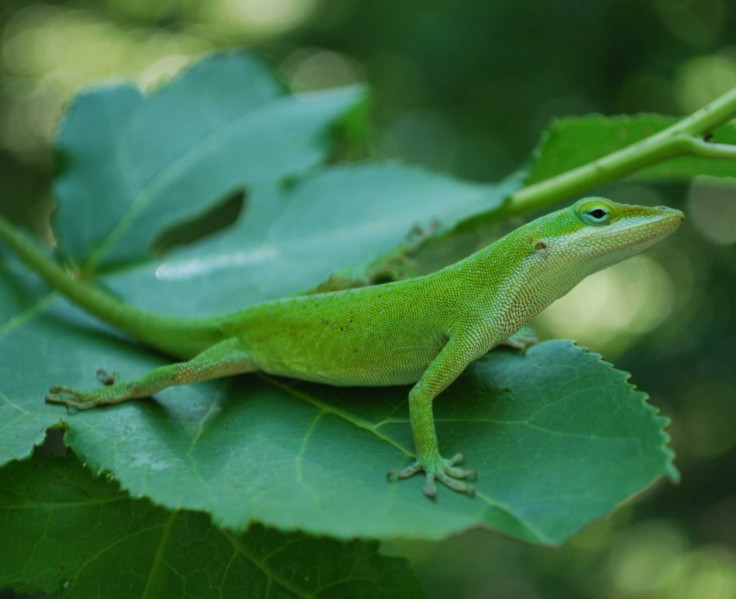Scientists Sequence Lizard Genes for First Time Unveiling Evolution Secrets

Researchers have managed to sequence the genes of the green anole lizard, which is the first non-bird species of reptile to have its genome sequenced and assembled. The findings, which researchers have obtained after assembling and analyzing more than 20 mammalian genomes, may go a long way in understanding the evolution of animals and humans.
The green anole lizard, or Anolis carolinensis, is a native of the Southeastern United States and is an agile and active creature. Four hundred species of anole lizards have fanned out across the islands of the Caribbean, North America, Central America and South America, making them an appealing model for studying evolution.
Although much is known about their biology and behavior, genomic information may be a critical missing piece for understanding how the lizards have become so diverse and how lizard species evolved to populate islands in the Greater Antilles.
Researchers were able to make a preliminary map of how these species evolved to colonize the islands by sampling the genomes of more than 90 species. Much like Darwin's finches, anoles adapted to fill all of the ecological niches the islands have to offer.
In addition, the genome sequencing of the green anole lizard may offer insights into how the genomes of humans, mammals and their reptilian counterparts have evolved since mammals and reptiles parted ways 320 million years ago.
Sometimes you need to be at a certain distance in order to learn about how the human genome evolved, said Jessica Alföldi, a research scientist in the vertebrate genome biology group at the Broad Institute. You have to look out further than you were looking previously.
Anoles are rich in ecology and morphology and have just the right amount of diversity to make them interesting yet tractable to study, said Jonathan Losos, a professor at Harvard University. But a big stumbling block in studying them has been that they have not been great organisms for classical genetic study. The genome is going to revolutionize our ability to study that aspect of their evolutionary diversification.
The newly sequenced genome may help in resolving the origin of conserved, non-coding elements in the human genome. These regions do not contain protein-coding genes but are thought to have critical roles since they have remained unchanged for millennia.
Scientists wondered where these mysterious elements came from and hypothesized that they may be the relics of transposons - jumping stretches of DNA that were at one time able to copy and paste themselves throughout the genome. In humans, many of these so-called jumping genes have lost their jumping ability, but in anole lizards, they continue to hop.
Anoles have a living library of transposable elements, said Alföldi. The researchers aligned these mobile elements to the human genome, and found that close to 100 of the human genome's non-coding elements are derived from these jumping genes. In anoles, these transposons are still hopping around, but evolution has used them for its own purposes, turning them into something functional in humans.
The researchers were also able to create a parts list of proteins found in green anole eggs, which they compared with those found in eggs from chickens and found that both bird and lizard egg genes are evolving rapidly.
They also found many genes in the anoles genome associated with color vision, which anoles rely on to identify choice mates. Males and females of some species display vividly colored flaps of skin beneath their necks called dewlaps.
Anoles have extremely good color vision - some species can even see in the ultraviolet range, said Losos. Other studies have shown that anoles can distinguish between similar colors and patterns. It's pretty clear that one function of the dewlap is to distinguish one species from others and that they use the dewlap to determine whether another individual is in another species or not.
Researchers have also found that that green anoles appear to have XX and XY chromosomes like mammals.
© Copyright IBTimes 2024. All rights reserved.





















